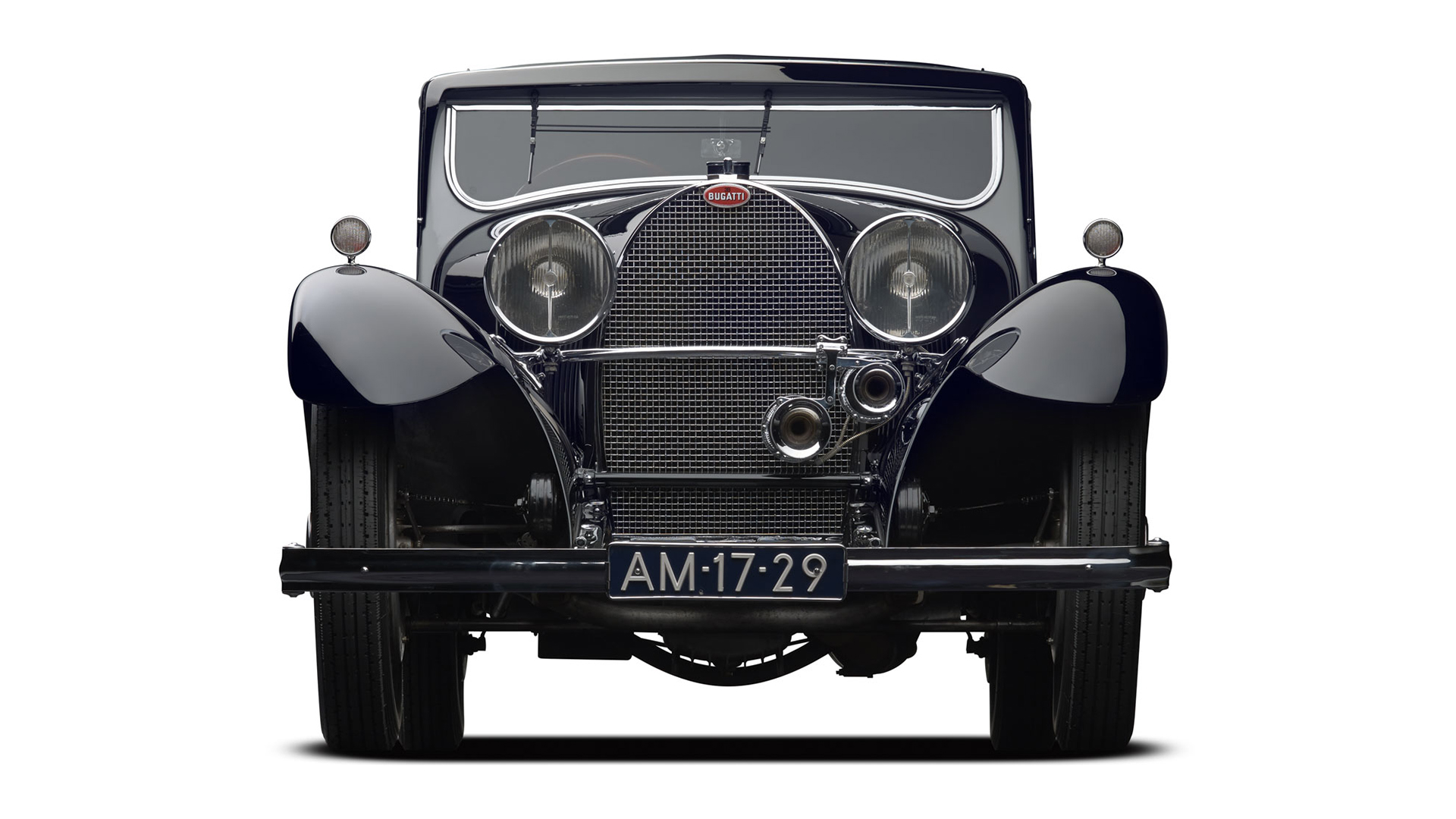

The 1931 Bugatti Type 50S was the short-wheelbase coupe version of 1930’s luxurious and equally supercharged Type 46S. Another noteworthy difference is that while Bugatti’s larger model used a single-overhead-cam straight-eight engine, the Type 50 featured a reduced capacity 5.0-liter two-valve with dual-overhead cams for a whopping 225 horsepower. Urged by his son Jean, Ettore Bugatti chose American Harry Miller’s hemispherical head and ninety-degree inclined valve design to produce his punchy eight-cylinder, first trialed in the Type 51 grand prix car. This, in turn, made the coupe quite a hotrod on the streets—almost too much.
With this engine in a lightweight body, rumor has it that British Bugatti Agency was reluctant to sell the car to tight roads of the British countryside. While intended for daily driving, the Type 50S was still a regular at the Le Mans 24 Hours up until 1935, after which Bugatti introduced the Type 50B, a race car blown to even higher outputs.

Peter Mullin’s Type 50S is a special bit of kit. From the total of 67 coupes made until 1934, chassis number 50117 is an all-aluminum bodied example finished by French couchbuilders Million, Guiet & Cie. Make no mistake, while sporting the looks of a fairly conventional hardtop, this 225-horsepower twin-cam was an absolute hotrod in its day.




Following its complete restoration, the Mullin Automotive Museum’s Type 50S was first shown at Pebble Beach in 2014, wowing Bugatti fans with its turquoise green stingray hide interior, third seat facing sideways, and period-correct trio of spare spark plugs in the engine bay. Keep in mind that at the time, an Avions Voisin C27 Grand Sport Roadster came with six extras due to its immerse oil consumption, which was by design.
While these high-end DOHCs were two-valves, Bugatti’s SOHC engines featured three valves per cylinder.

Got a tip? Send us a note: tips@thedrive.com